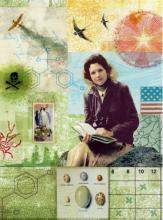
Understanding the toxicity of chemicals to organisms requires considering the molecular mechanisms involved as well as the relationships between exposure concentration and toxic effects with time. Our current knowledge about such relationships is mainly explained from a toxicodynamic and toxicokinetic perspective. This paper re-introduces an old approach that takes into account the biochemical mode of action and their resulting biological effects over time of exposure. Empirical evidence demonstrates that the Druckrey-Küpfmüller toxicity model, which was validated for chemical carcinogens in the early 1960s, is also applicable to a wide range of toxic compounds in ecotoxicology. According to this model, the character of a poison is primarily determined by the reversibility of critical receptor binding. Chemicals showing irreversible or slowly reversible binding to specific receptors will produce cumulative effects with time of exposure, and whenever the effects are also irreversible (e.g. death) they are reinforced over time; these chemical have time-cumulative toxicity. Compounds having non-specific receptor binding, or involving slowly reversible binding to some receptors that do not contribute to toxicity, may also be time-dependent; however, their effects depend primarily on the exposure concentration, with time playing a minor role. Consequently, the mechanism of toxic action has important implications for risk assessment. Traditional risk approaches cannot predict the impacts of toxicants with time-cumulative toxicity in the environment. While most toxicants with a generic mode of action can be evaluated by the traditional concentration–effect approaches, a certain number of chemicals, including carcinogens, methylmercury, rodenticides, neonicotinoids and cartap insecticides have toxic effects that are reinforced with time of exposure (time-cumulative effects). Therefore, the traditional risk approach cannot predict the impacts of the latter chemicals in the environment. New assessment procedures are needed to evaluate the risk that the latter chemicals pose on humans and the environment. An example is shown to explain how the risk of time-dependent toxicants is underestimated when using current risk assessment protocols.










